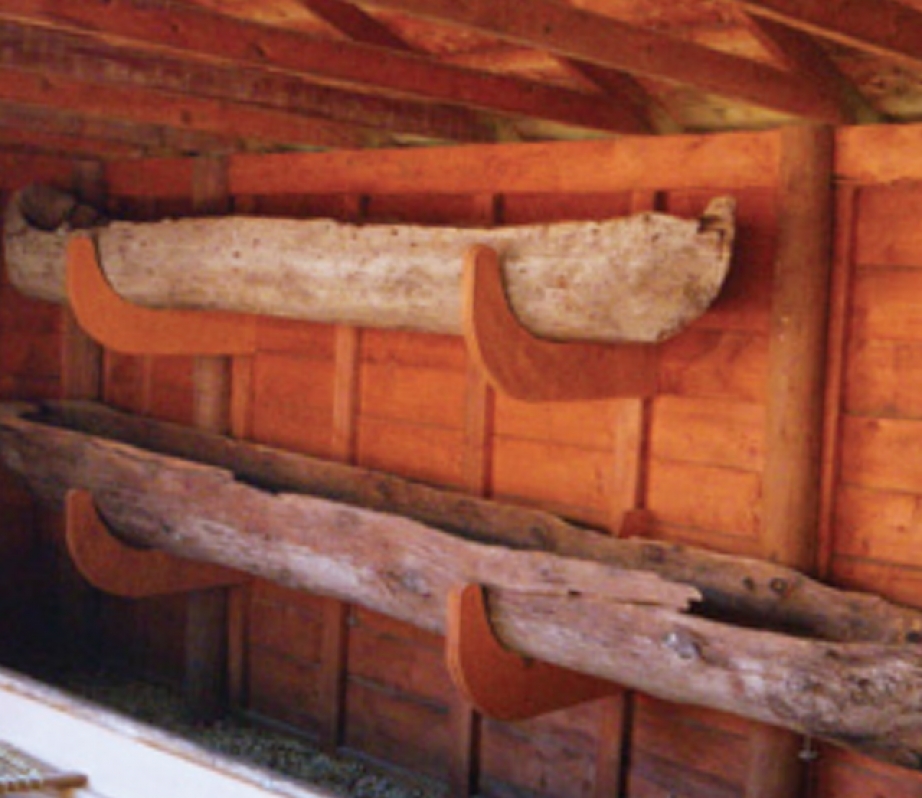“The lake was ours,” wrote Konstantin Schwartz in his diary, recalling the moment he and a comrade paddled out of the reedy shallows and into the gently rippled expanse of Whitewater Lake in the Manitoba wilderness. Many canoeists alone on a secluded lake have probably experienced a similar feeling.
Unteroffizier Schwartz and his companion weren’t alone, however, or free. They were German prisoners of war held in a labor camp at Whitewater Lake in the backcountry of the Riding Mountain National Park, southwestern Manitoba, from 1943-45. Most were Afrika Korps captured in Egypt after the Second Battle of El-Alamein in late 1942.
The craft paddled by Schwartz was one of an unknown number of dugout canoes built by the PoWs in their spare time. The Germans were free to canoe the isolated lake and occasionally broke away for several hours to visit Ukrainian farmers they’d befriended. Permanent escape was all but a geographical impossibility. The handcrafted canoes may have been hypothetical getaway vessels, but even if the prisoners paddled and portaged for weeks, they’d still be in the center of an enemy continent.
This rare canoeing chapter of the Second World War might have been lost if not for the recent efforts of Stanford University Archeology PhD candidate Adrian Myers. The Vancouver-born scholar has just wrapped up three years of fieldwork at Whitewater Lake and is currently cataloging and analyzing his findings. His study focus is on the PoW camp as a whole, but the canoes have proved to be a diverting sidelight.
Myers and his team uncovered six Prisoner of War-built canoes in various states of preservation.
“This was a labor detachment sent to Riding Mountain National Park for the purpose of logging. So as the prisoners came across trees that were big enough, they set them aside for recreational use,” says Myers, who has identified the canoemakers’ likely tools: a bow saw, axes, chisels, hammers and knives. Mature fir, spruce, or poplar trees logged from the surrounding forests probably provided the raw material.
In addition to the canoes identified in situ and two preserved at Fort Dauphin Museum, more probably existed. “The historical documentation mentions a flotilla,” says Myers. “They might’ve made 20 or 30.”
How did the prisoners know how to make canoes? This is a question that Myers is still looking to answer; he admits that he doesn’t have hard proof but an oral account he came across suggests the presence of a magazine at the camp.
“Could someone with no knowledge of boats just carve a canoe? Would it float and go where you wanted it to go, or not? We looked closely at the canoe in the Fort Dauphin Museum and it’s a sailing canoe with hardware—either someone knew how to do it from before the war, or they had a magazine in the camp with a picture or instructions.” Myers is hoping to unearth a publication from the period to verify the oral account. Until then, German engineering will have to be explanation enough.
Ned Morgan is a writer and editor living a short portage away from Georgian Bay, Ontario.

This article first appeared in the Early Summer 2012 issue of Canoeroots Magazine.




